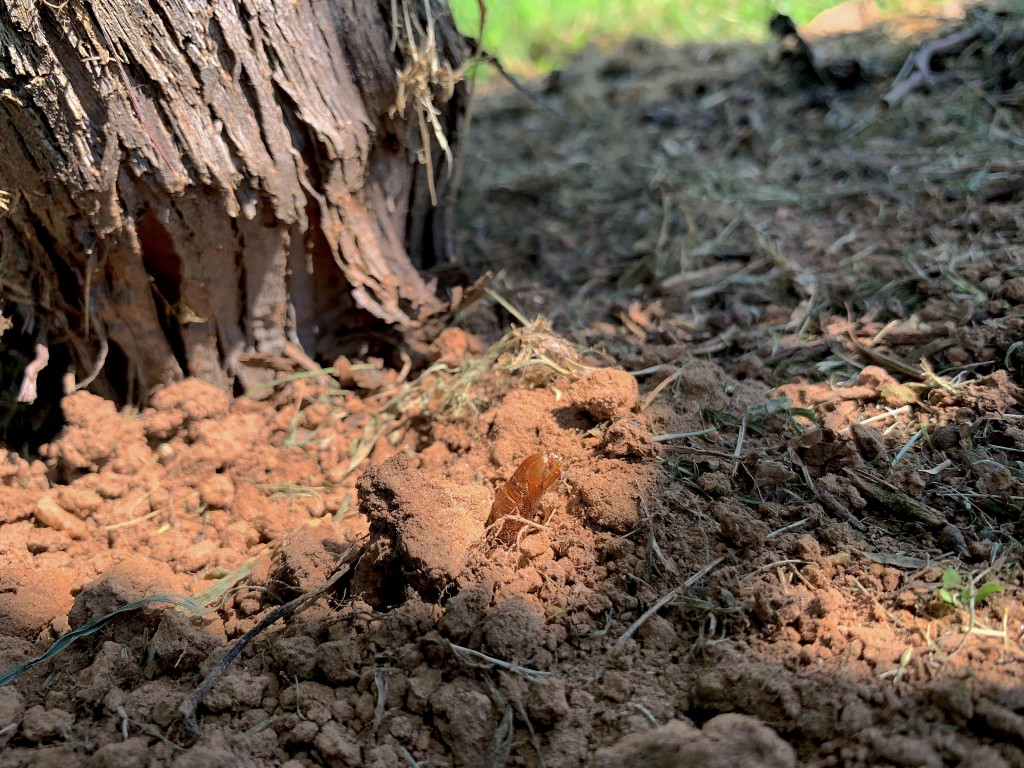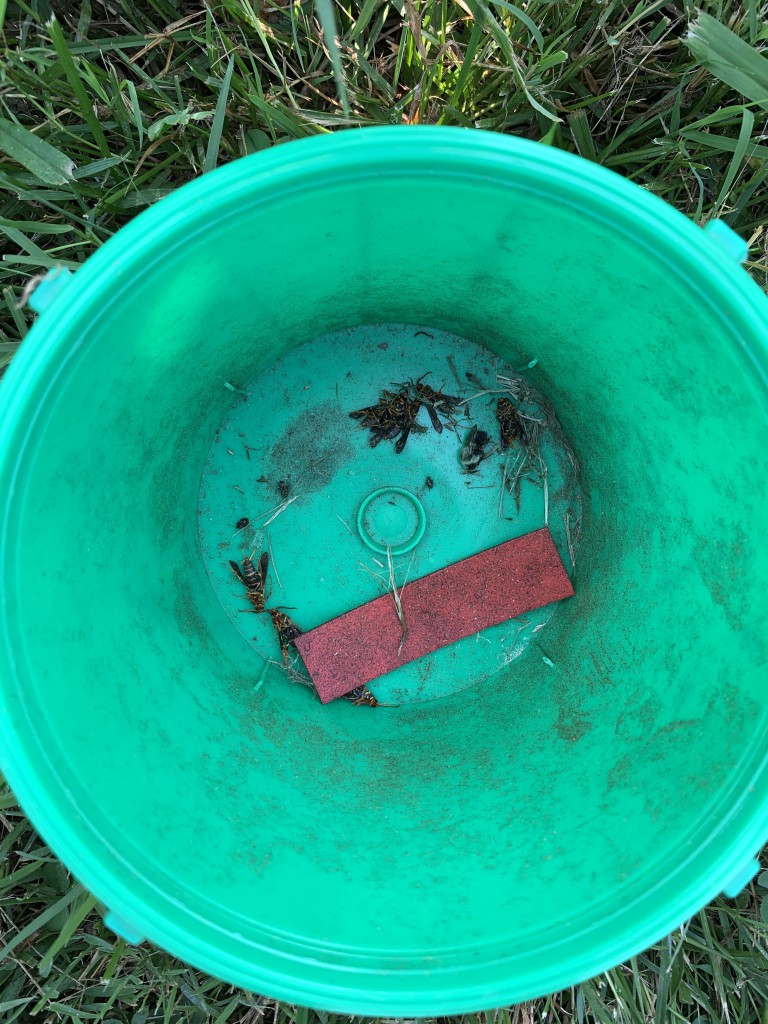We collected our first grape root borer adults today in one of our pheromone traps in Lumpkin County, Georgia. This means that the adults have started to emerge from the soil out of their pupal stage. For the next few weeks the adults will emerge, mate, and the females will lay their eggs at the base of vines. Thus if you have had a history of grape root borer injury at your vineyard, now is the time to start monitoring for this pest and to initiate management if necessary.
Alternatively, or in addition to, pheromone traps can be used to assess grape root borer activity (this is what we have been using, see image). The traps are placed in, or at the edge of, a vineyard at the rate of one trap per acre. Collection of grape root borer moths in the traps not only alerts you to the potential problem, but can also be used to determine the initiation of insecticidal treatments.
In terms of management, since the adults are now emerging, we are too late in the season to apply dispensers for mating disruption, so chemical management is our key option. Currently, the only insecticide registered for control of grape root borer is Lorsban 4E (chlorpyrifos), which is applied as a coarse spray to the base of vines to kill adults as they exit the soil and newly hatched larvae before they attack the vine. Follow the label instructions and see the Southern Region Small Fruits Consortium for recommendations, but note that an application of Lorsban should not be made within 35 days of harvest.
Note that the first signs of infestation are generally yellowing and wilting of the leaves with a subsequent loss of plant vigor and reduced production. Over time this will result in reduced shoot growth, smaller leaves and berries, loss of vigor, susceptibility to freeze damage and drought, and reduced yields.
Thus, it is important to monitor the soil underneath the vines exhibiting these issues for signs of grape root borer. Adults emerge from pupal cases at the soil line, leaving the brown cases protruding partially from the ground (see image below). Check the area of about 18 inches of the soil surface surrounding the base of vines. Keeping this area clear of vegetation will aid in detection and will potentially help with control of grape root borer by increasing the exposure of their eggs to predators and desiccation.

If you have any questions about the management strategies discussed here, please let me know.
Additional information about grape root borer management, please click here.
